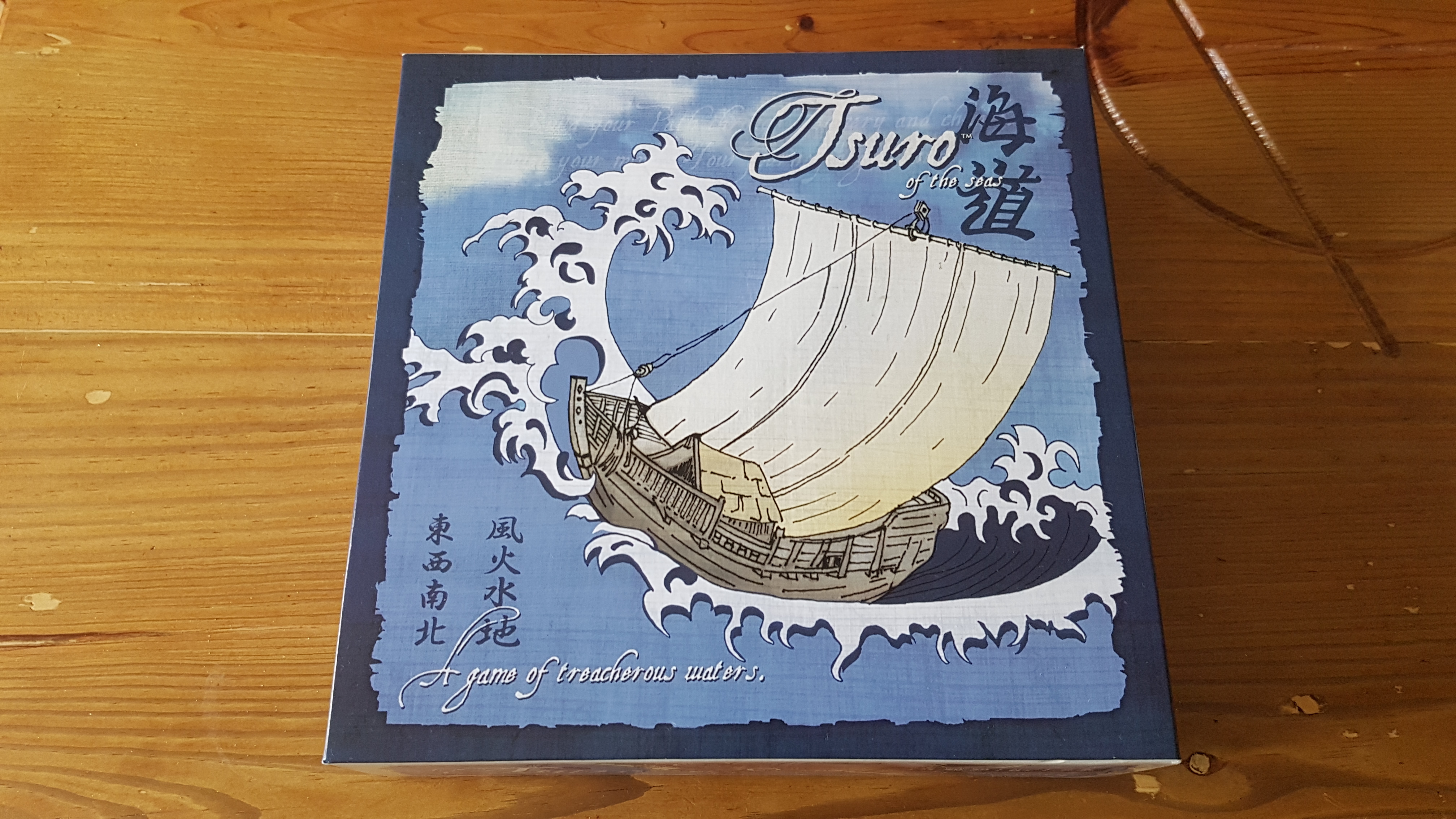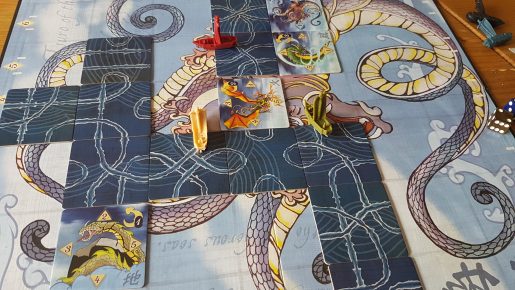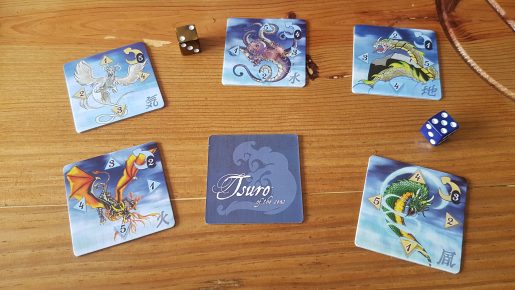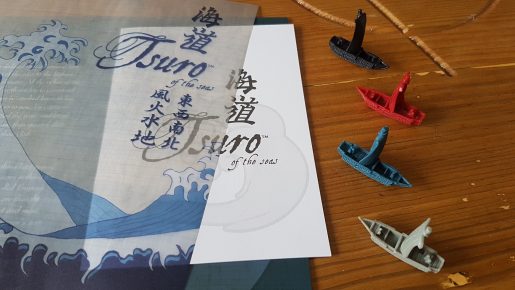Tsuro of the Seas is an abstract strategy board game with a Japanese nautical theme; from designers Tom McMurchie and Jordan Weisman and publisher Calliope Games. Released in 2012, this is a sequel to the 2004 title Tsuro and follows a similar path. The game plays for a touch longer than the original on the first playthroughs, before lowering to around 10 – 15 minutes, though still offers a wide player count range of 2 – 8 people. The tile placement mechanics have stayed the same, though this time around players will also contend with troublesome daikaiju monsters which roam the board. However, do the additions truly add to the game? Let’s find out!
As with the original Tsuro, at the start of the game players will choose a coloured playing piece, this time around being ships not just markers, and a place to start at the edge of the empty board in front of them. Players will be dealt three tiles each, forming their hand to choose from on turns. Overall, on a turn a player will roll the dice to see if the daikaiju activate and add a wake tile, the same as path tiles from Tsuro, in front of their ship on the 7 by 7 game board.
These daikaiju and their tiles are where the rules for Tsuro of the Seas differ from the. Before tile placement, and therefore moving, the active player must roll 2d6 (two six-sided dice). A roll of 6, 7 or 8 (the most probable outcomes) triggers a daikaiju action. What action is then taken is determined by rolling a single die. Each daikaiju tile has 5 indicated actions, a number representing movement up, down, left or right and a final rotation action. These actions are simple to follow and see whatever the daikaiju encounters destroyed and removed from the game. To make matters worse, rolling a 6 on this daikaiju action roll sees a new daikaiju tile added into play. Interestingly, it doesn’t matter what a daikaiju tile interacts with, even another daikaiju tile is removed from play; consequently, the threat level can fluctuate but it is rarely low!
Past the daikaiju action stage, whether it was triggered or not, play returns to normal with the active player placing a wake tile. After placing it in front of their ship the player must move their ship along the new wake path in front of them, until they either reach the edge of a tile or the board. Once they have moved themselves they must move any other players ships that are now, as a result of this new tile, not at the end of a path. If a player sails to the end of a wake that is off the board or into a daikaiju they are eliminated from the game. The aim is simple, survive the longest!
There is certainly a different feel from the original, though the randomness of the daikaiju won’t be for everyone. As they can potentially move on each players turn as the player count rises the chances they’ll effect you between turns only rises. This has left me feeling helpless to the dice rolls not only of myself but others around the table too. Go into the game knowing it should be treated as more of light-hearted fun and you’ll enjoy it, and thankfully the game certainly doesn’t outstay its welcome. The overall game length is around the same as the original, past a learning game or two. Despite the additional time taken to roll dice and move the monsters there are plenty of additional opportunities to be eliminated keeping the speed factor.
At the end of the day with Tsuro of the Seas players have a choice, to include or exclude the “new” content. The ability to play the game without the daikaiju tiles enables the game to mirror the original, different only in art style. At this point it becomes solely about personal choice between the styles rather than any gameplay differences. Personally, the wisdom like paths to follow appeal to me more than the nautical theme of ships along wakes, despite the more abstract nature. This being said, explaining about ships following wakes is a little more natural to teach, especially to new gamers.
While I would recommend Tsuro of the Seas to play, I’d struggle to suggest including the thing that makes it unique and go above and beyond the original. The daikaiju aren’t just monsters to players during the game but also to the experience. Some will love the chaos their randomness creates. Alas, I am not one of those people; preferring the “original” gameplay with the only luck being the tiles being drawn. The production quality of this version is unsurprisingly brilliant with the nautical theme coming through strong from each and every element. If you’re stuck between the themes of the games, Tsuro of the Seas does offer a way to spice things up, at least experiencing it is worthwhile to see if it is for you.
We were fortunate enough to also get hands on with Tsuro of the Seas: Veterans of the Seas. Veterans of the Seas is a mini expansion for Tsuro of the Seas, previously only available by pledging during the Kickstarter campaign. Adding in new devastating Tsunamis and Whirlpool tiles and helpful game lengthening Cannons and Magic Portal tiles this is very much in keeping with the nautical theme. These add to the game in the same way the daikaiju tiles do, therefore they only enhance the love or hate experience. Fans of the sea monsters will get to play around with new events, whilst those whom see the experience as tainted by randomness would be best to ignore this expansion.
[Editor’s note: Tsuro of the Seas and the Veterans of the Seas mini-expansion were provided to us for the review by Calliope Games.]




